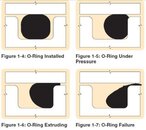fisheater
Contributor
Or, you can consider going a whole cheaper and getting an Underwater Leak Detector from Underwater Camera Housing Leak Detector - Underwater Camera Housing Leak Detector - Home Page. It's a perfect fit for my E-PM1's Oly housing.
Here's a video showing it action in an Olympus PEN housing.
[video=youtube;HDgxOElFaDc]http://www.youtube.com/watch?feature=player_embedded&v=HDgxOElFaDc[/video]
Here's a video showing it action in an Olympus PEN housing.
[video=youtube;HDgxOElFaDc]http://www.youtube.com/watch?feature=player_embedded&v=HDgxOElFaDc[/video]
Last edited:




